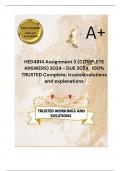, QUESTION 1. Psychosocial Support and Emotional-
Behavioural Interventions (25 marks) a) Explain the concept of
psychosocial support in an educational context. (5 marks) b)
Discuss three evidence-based strategies for providing emotional
support to students in a classroom setting. (10 marks) c)
Describe a behavioural intervention approach of your choice and
explain how it can be implemented to address challenging
behaviours in the classroom. (10 marks)
1a) Psychosocial Support in an Educational Context (5
marks)
Psychosocial support in education refers to providing learners
with care that addresses their emotional, social, and mental well-
being, alongside their academic needs. It recognizes the
importance of a holistic approach to student development, where
mental health, relationships, and social skills are integral to
learning. Psychosocial support often includes fostering a safe,
inclusive, and supportive environment where students feel
valued and capable of overcoming personal and educational
challenges. This approach helps students manage stress, develop
coping skills, and build resilience, allowing them to achieve
their academic potential while maintaining emotional well-
being.
, 1b) Three Evidence-Based Strategies for Providing
Emotional Support in the Classroom (10 marks)
1. Building Positive Teacher-Student Relationships
o Description: Establishing trust and a positive rapport
between teachers and students is a fundamental
emotional support strategy. When students feel
respected, understood, and cared for, they are more
likely to engage in learning, feel safe, and seek help
when needed.
o Implementation: Teachers can practice active
listening, show empathy, and be consistent in their
communication. Simple acts like greeting students by
name and acknowledging their feelings create a sense
of belonging and emotional security.
o Evidence: Research shows that positive teacher-
student relationships reduce anxiety, increase
motivation, and improve academic outcomes.
2. Mindfulness and Emotional Regulation Techniques
o Description: Mindfulness practices help students
develop self-awareness and manage their emotions
effectively. Teaching techniques such as deep
breathing, meditation, and reflection allows students to
control stress and anxiety in the classroom.
o Implementation: Teachers can incorporate short
mindfulness exercises at the beginning or end of the
day, or during transitions. This could involve deep
breathing exercises, guided visualizations, or short
periods of silent reflection.
o Evidence: Studies have shown that mindfulness
interventions improve emotional regulation, reduce




